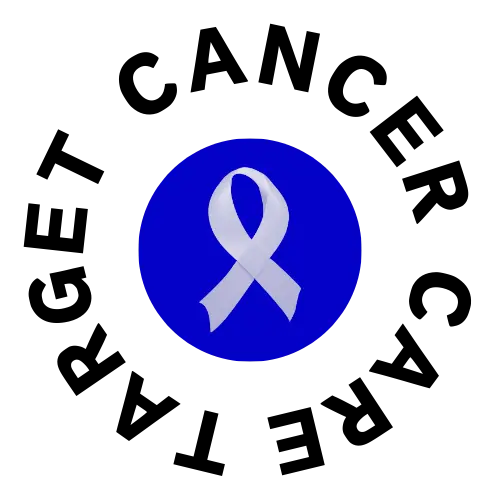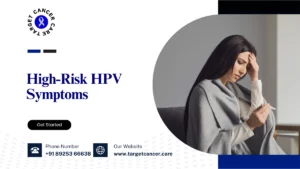Cancer is one of the most expensive diseases to treat, but fortunately, several programs in India provide financial help for cancer patients in India. These initiatives aim to ease the burden of cancer treatment costs, offering patients much-needed financial support. Some of the most recognized schemes include Rashtriya Arogya Nidhi and CTMFFP Scheme, which provide free money for cancer patients to help cover expenses such as chemotherapy treatment, surgery, and radiation. These programs, along with the Cancer Financial Assistance Coalition, aim to ensure that financial challenges do not prevent anyone from receiving the care they need. This blog will guide you through these helpful schemes, explaining the treatments covered, eligibility requirements, and how to apply.
What is Cancer Crowdfunding?
Cancer crowdfunding is a way to raise small contributions from many people to pay for tests, surgery, chemotherapy, radiation, targeted therapy, immunotherapy, rehabilitation, and travel or caregiving costs. It uses secure payment gateways and storytelling to turn community support into timely treatment funds. Many families look for Financial help for cancer patients in India through such campaigns because it can start quickly and reach donors across cities and abroad. It also makes online financial help for cancer patient’s in india possible for those who cannot depend on a single sponsor.
- Why families choose it: Crowdfunding can start within hours, which matters when treatment needs to begin without delay. It also allows friends, colleagues, alumni groups, and strangers to help transparently through updates, bills, and medical summaries.
- How it supports dignity: The patient or caregiver keeps control over the goal amount and how funds are used. Regular updates and photos show progress, building trust and keeping supporters engaged.
- A bridge, not the only path: It often complements insurance and government schemes rather than replacing them. Used together, these tools can close gaps and protect savings while ensuring continuity of care and Financial help for cancer patients in India.
How does cancer crowdfunding work?
At its core, a campaign shares a clear medical summary, the cost breakdown, and a human story that donors can understand. It answers practical questions like how to get financial help for cancer patients in india, what the money pays for, and when it is needed.
- Start the campaign: Create a page with a short diagnosis note from a treating hospital, a cost estimate, and a realistic goal. Add photos, a short video, and a timeline to show what happens after each funding milestone.
- Share widely and steadily: Post the campaign link on messaging apps and social networks in small, regular bursts rather than one large push. Encourage a few close friends to donate early and leave supportive notes, as early momentum builds trust.
- Document every rupee: Upload bills, discharge summaries, and payment receipts as treatment progresses. This shows impact, encourages repeat donations, and answers doubts before they arise.
- Receive and use funds: Most platforms release funds to the patient or hospital account in tranches. Keep a simple spreadsheet of expenses and outcomes so donors can see how their support improves care and provides Financial help for cancer patients in India.
- Know the limits: Crowdfunding works best when the story is clear and the need is urgent. For long treatment plans, pair it with state or central programs that provide financial help for cancer patients treatment in india and institutional concessions.
- Digital access matters: If you live far from large cities, platforms enable online financial help for cancer patient’s in india through UPI, cards, and net banking. This widens your donor base and reduces travel burden while answering how to get financial help for cancer patients in india in a simple, step‑by‑step way.

Diagnosed with Cancer?
A new diagnosis can feel overwhelming, but a steady plan reduces both stress and cost. Start by gathering documents: Aadhaar, income proof, ration card (if any), prior medical files, and your hospital’s estimate. These help you apply for schemes, start a campaign, and unlock Financial help for cancer patients in India quickly.
- Confirm the treatment pathway: Ask the treating oncologist for a written plan with phases, expected timelines, and likely costs. This makes your funding goal realistic and helps you combine schemes with personal savings.
- Check insurance and network hospitals: If you have insurance or employer coverage, confirm cashless options and exclusions in writing. Even partial approvals, combined with financial help for medical treatment in india, can cover a large share of the plan.
- Launch support early: Begin a crowdfunding draft and gather three to five friends who can champion the campaign. Their early support, plus applications to public schemes, often unlocks online financial help for cancer patient’s in india and creates a reliable pipeline of resources.
- Keep communication simple and regular: Short updates about each chemo cycle, scan, or surgery date help donors feel connected. This gentle rhythm makes it easier for them to give again and invite others to join.
Types of Cancers that You Can raise Funds
You can raise funds for nearly any cancer type, as long as the medical need is clear and documented. This includes common and rare cancers, early‑stage and advanced disease, and pediatric or geriatric cases. In every case, donors respond well to clarity about how support becomes Financial help for cancer patients in India.
- Solid tumors: Breast, lung, colorectal, head‑and‑neck, cervical, ovarian, prostate, liver, pancreatic, bone, and brain tumors. Campaigns often cover surgery, adjuvant therapy, targeted drugs, and radiation planning.
- Hematologic cancers: Leukemias, lymphomas, and multiple myeloma. Costs may include high‑dose chemotherapy, bone marrow transplant, supportive care, and infection control during low‑immunity periods.
- Pediatric cancers: Neuroblastoma, Wilms’ tumor, acute lymphoblastic leukemia, and sarcomas. Donors are moved by clear schedules for cycles, growth monitoring, and schooling support during treatment breaks.
- Rare or advanced cases: Metastatic disease, relapsed tumors, or rare genetic subtypes that need specialized tests. These campaigns should show expert opinions and why a certain protocol is recommended to access financial help for cancer patients treatment in india without delays.
Government’s Schemes for Cancer Patients
Public programs reduce out‑of‑pocket cost, improve access to network hospitals, and support families below specific income thresholds. When combined with charitable funds and responsible crowdfunding, they provide layered Financial help for cancer patients in India and durable financial help for medical treatment in india. They also complement financial help for cancer patients treatment in india in cases where high‑cost drugs or long hospital stays are needed.
Ayushman Bharat (Pradhan Mantri Jan Arogya Yojana – PMJAY)
PMJAY offers cashless coverage for eligible families at empaneled hospitals across India. It uses e‑cards to authenticate patients, and packages many oncology procedures and therapies under defined rates.
- How it helps: Coverage applies to inpatient care, surgical procedures, and many oncology regimens at listed centers. Pre‑authorization and cashless admission lower upfront payments and support financial help for cancer patients treatment in india at scale.
- What to prepare: Keep Aadhaar, ration card or Socio‑Economic Caste Census eligibility proof, and your PMJAY e‑card ready. Check if your treating hospital is empaneled and ask the helpdesk to trigger pre‑authorization early.
Prime Minister’s National Relief Fund (PMNRF)
PMNRF extends financial assistance for serious medical conditions, including cancer, based on need and documentation. Funds are generally released to the hospital to cover part of the treatment.
- Strength of the scheme: It can support high‑value procedures or drugs when standard coverage falls short. Applicants strengthen their case with detailed estimates, recent reports, and an admission plan.
- Practical tip: Work with the treating hospital’s social worker to assemble the file correctly. A complete set reduces back‑and‑forth and speeds up sanction.
Health Minister’s Cancer Patient Fund (HMCPF) under Rashtriya Arogya Nidhi (RAN)
This fund supports below‑threshold income families for cancer treatment in government or designated hospitals. Assistance often focuses on specific therapies that carry higher costs.
- Why it matters: It targets vulnerable households that might otherwise delay care. By routing support through notified hospitals, it aligns funding with standardized clinical pathways.
- How to apply: Collect income proof, identity documents, and a hospital estimate. The medical superintendent or a designated officer usually forwards the case for consideration.
Health Minister’s Discretionary Grant (HMDG)
HMDG provides limited one‑time assistance for patients from lower‑income backgrounds. It is designed for quick relief where small but urgent support can unblock treatment.
- Use‑case examples: First chemo cycle deposits, essential diagnostics, or a lifesaving drug dose. Even modest aid can bridge gaps while you combine other sources.
- Documentation needs: Identity, income proof, treatment plan, and the hospital’s letter explaining urgency. Clear and complete papers improve the odds of approval.
National Cancer Control Programme (NCCP)
NCCP focuses on prevention, early detection, and strengthening oncology services in public health systems. While it is not a direct cash payout scheme, it expands screening, diagnostics, and treatment infrastructure that reduces household costs.
- Practical benefit to families: When your district has better screening and day‑care chemo facilities, travel and lodging drop sharply. This acts as indirect financial help for medical treatment in india by cutting non‑medical expenses.
- How to plug in: Ask your hospital about state‑run screening camps, palliative care services, and tele‑oncology consults under this umbrella. Early detection often reduces the total cost of care.
State‑Specific Health Schemes
Many states run their own insurance or assistance programs through health missions, smart cards, or CM relief funds. Eligibility rules and package rates differ, but all aim to reduce catastrophic spending.
- Why this layer is vital: State schemes can top up central coverage, especially for advanced radiotherapy or specialized surgeries. Used with crowdfunding, they create steady Financial help for cancer patients in India over the full course of care.
- Action steps: Check your state health portal or hospital helpdesk for empaneled hospitals and oncology package lists. These programs often combine well with hospital concessions and financial help for medical treatment in india for low‑income families.
Delhi Arogya Kosh
This program supports eligible residents of the National Capital Territory for high‑cost treatments, including certain cancer procedures, at specified institutions. It is designed to cover gaps where other coverage is not enough.
- What strengthens an application: Proof of residence, income documents, a clear estimate, and the treating unit’s recommendation. The more specific your medical plan and cost sheet, the easier it is for the committee to assess need.
- How it fits the puzzle: Families often blend this support with PMJAY or state insurance, plus community funding. Together, these streams provide Financial help for cancer patients in India without pausing vital care.
Conclusion
Seeking financial assistance for cancer can be a vital step in managing treatment costs. Government schemes like Rashtriya Arogya Nidhi, CTMFFP Scheme, and Ambedkar Medical Aid Scheme offer necessary financial support to cancer patients, ensuring that treatment is accessible regardless of a patient’s financial situation. By following the application process and meeting eligibility requirements, patients can receive the financial help for cancer patients in India they need to focus on recovery and not on the cost of care.
Read also How is the Body Affected by Cancer.




